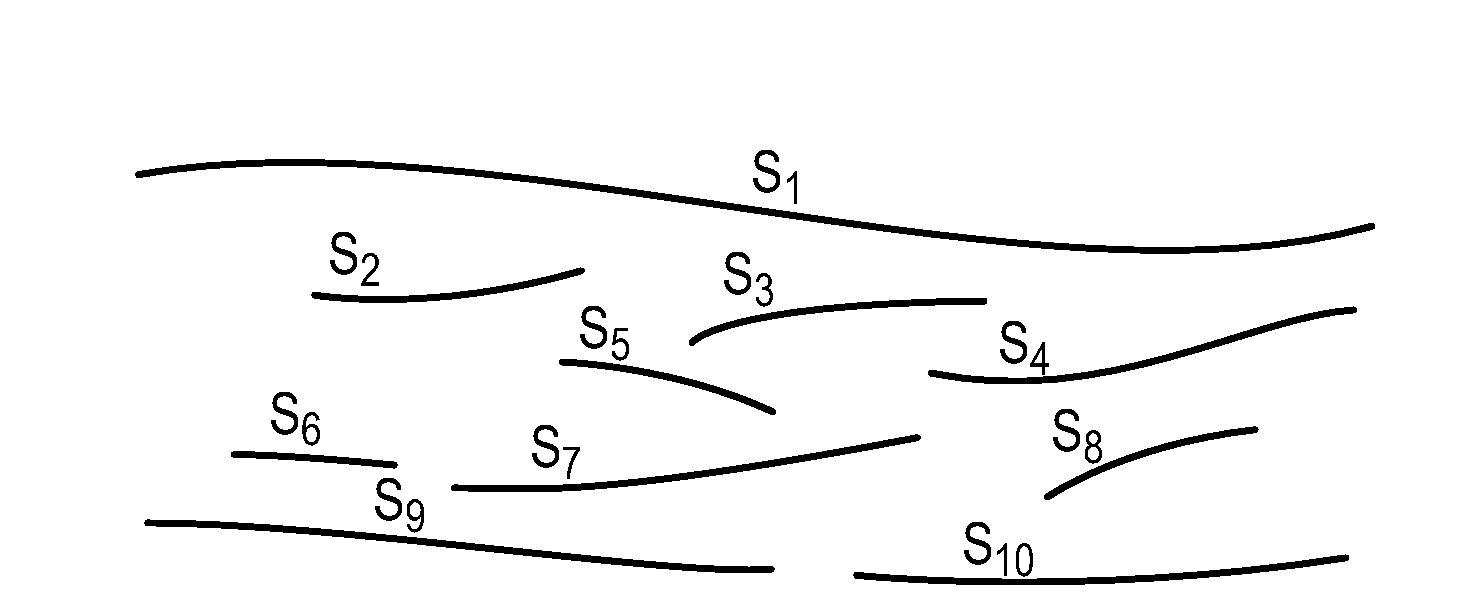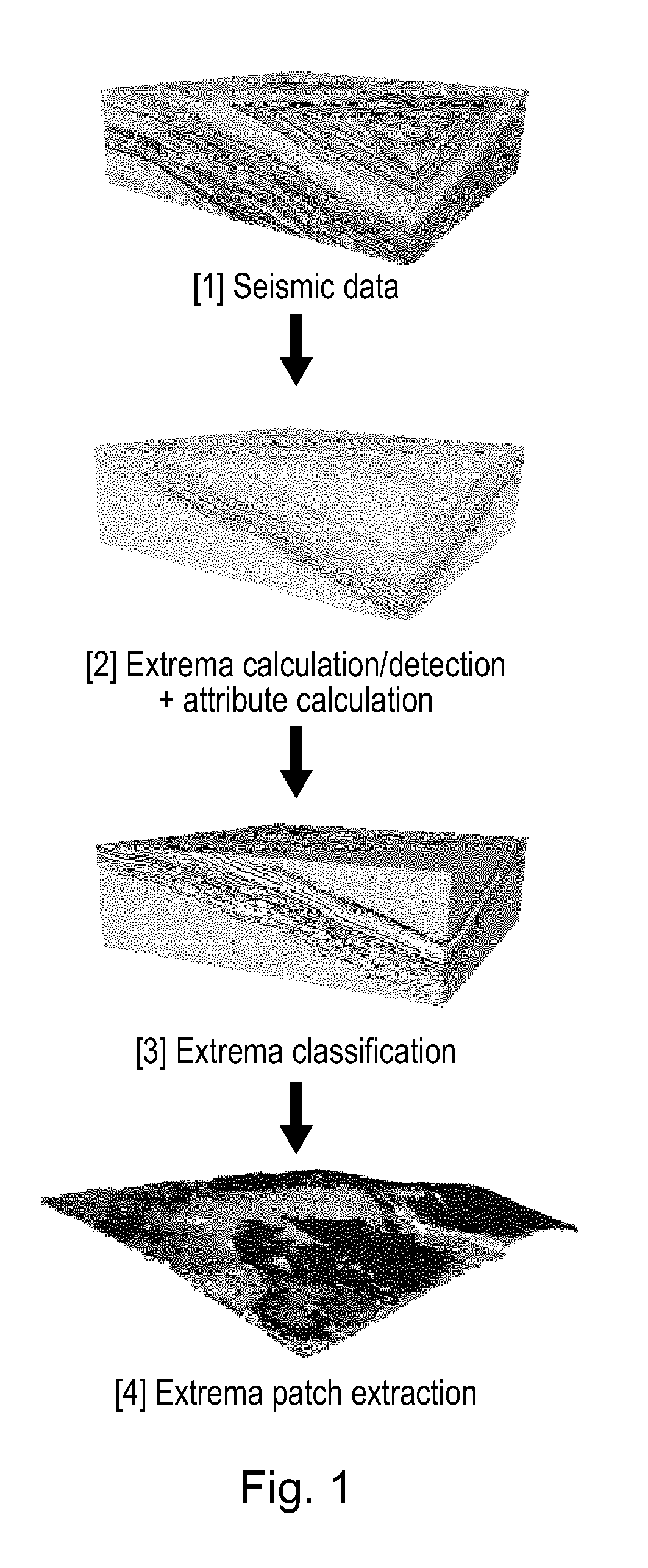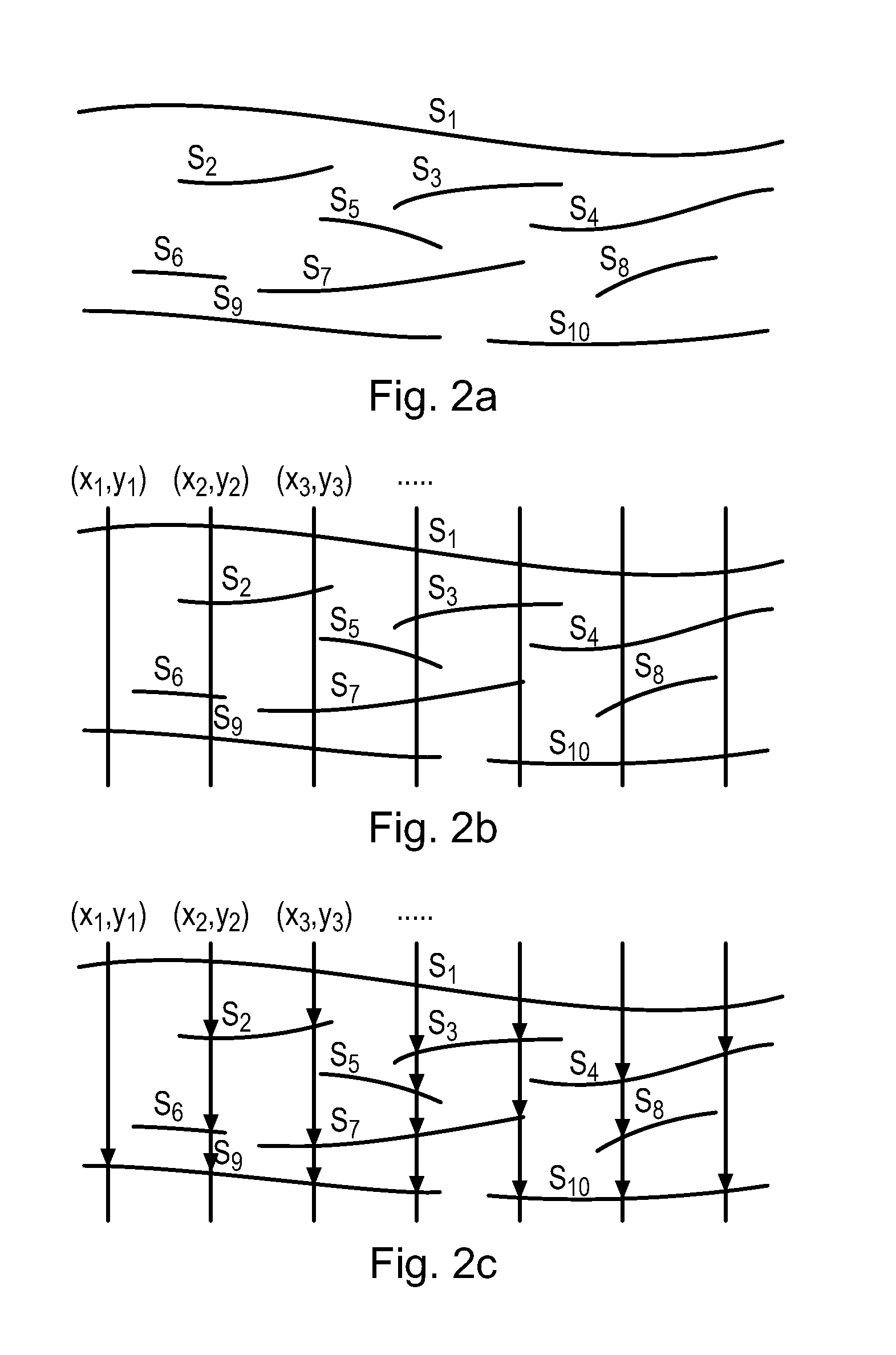Processing of stratigraphic data
a stratigraphic and data processing technology, applied in the direction of noise figure or signal-to-noise ratio measurement, measurement devices, instruments, etc., can solve the problem of daunting task of sequence stratigraphic analysis over large seismic volumes
- Summary
- Abstract
- Description
- Claims
- Application Information
AI Technical Summary
Benefits of technology
Problems solved by technology
Method used
Image
Examples
Embodiment Construction
Seismic Data Modelling
[0063]A seismic data volume can be treated as being a collection of horizon surfaces (often referred to as seismic events or strata) that are defined at the positions of seismic data zero-crossings, maximum or minimum values. Known methods by which such a sparse surface representation of a seismic data volume may be obtained are diverse, including manual interpretation, connected component labelling of extrema cubes and extrema classification.
[0064]Extrema detection, in particular, is a well known concept in signal and image processing, and there are many algorithms and techniques for performing such detection. For example, applying the extrema classification method discussed in US 2004 / 0260476, it is possible to obtain a sub-sample precision representation of all extrema within a seismic volume using volume reflection spectral decompositions (as discussed in WO09 / 37437).
[0065]A particular advantage of using the approach of US 2004 / 0260476 for extracting connec...
PUM
 Login to View More
Login to View More Abstract
Description
Claims
Application Information
 Login to View More
Login to View More - R&D
- Intellectual Property
- Life Sciences
- Materials
- Tech Scout
- Unparalleled Data Quality
- Higher Quality Content
- 60% Fewer Hallucinations
Browse by: Latest US Patents, China's latest patents, Technical Efficacy Thesaurus, Application Domain, Technology Topic, Popular Technical Reports.
© 2025 PatSnap. All rights reserved.Legal|Privacy policy|Modern Slavery Act Transparency Statement|Sitemap|About US| Contact US: help@patsnap.com



